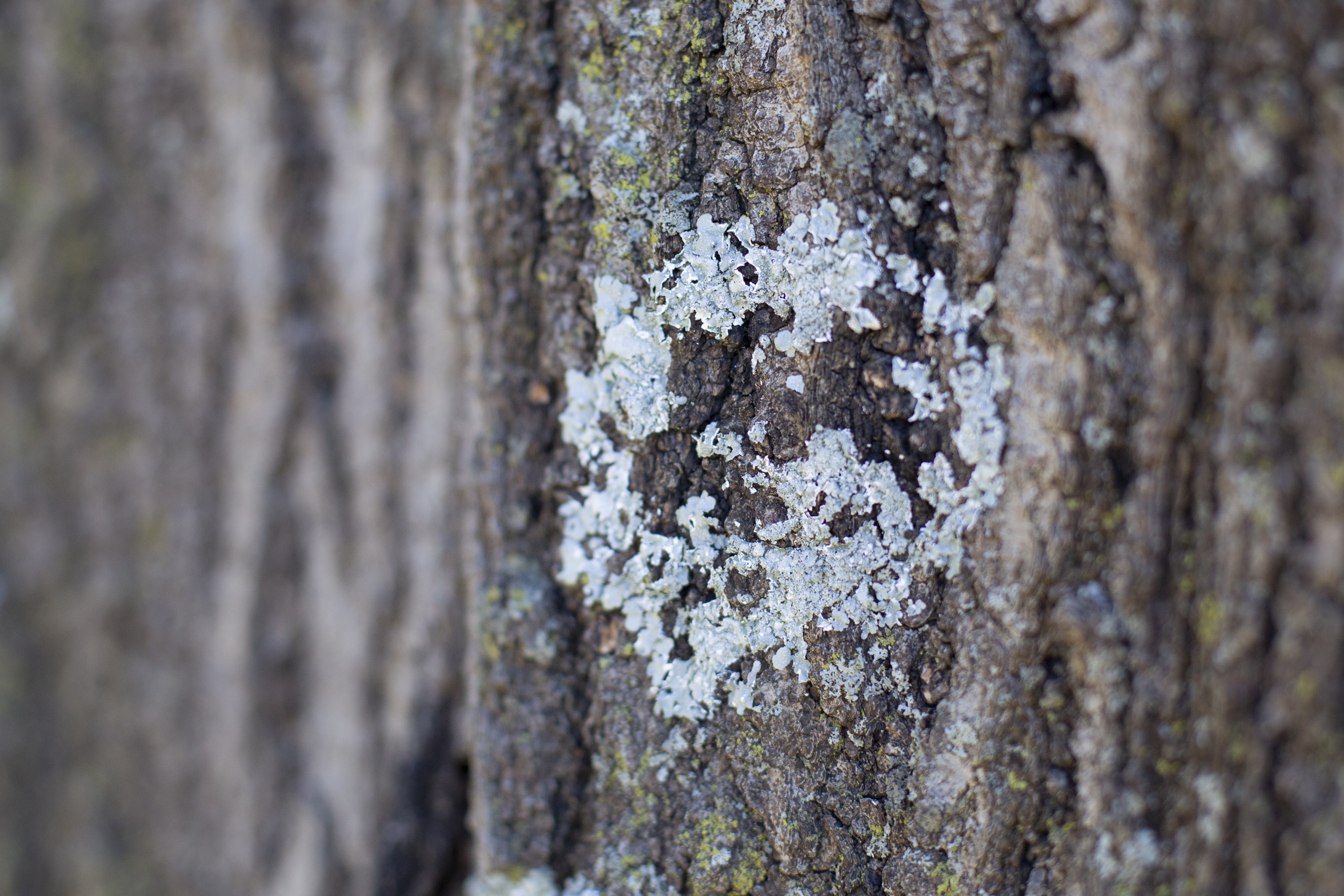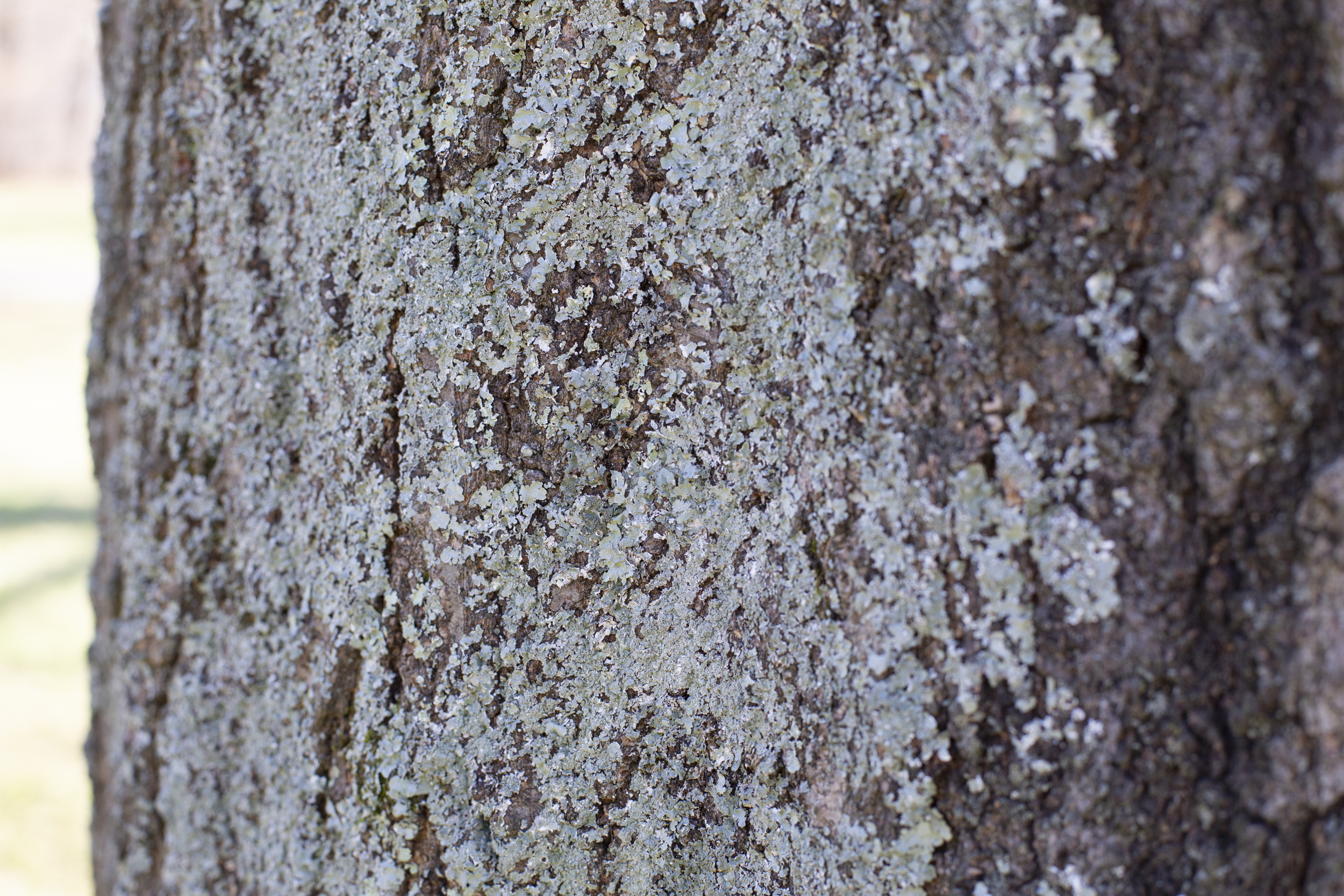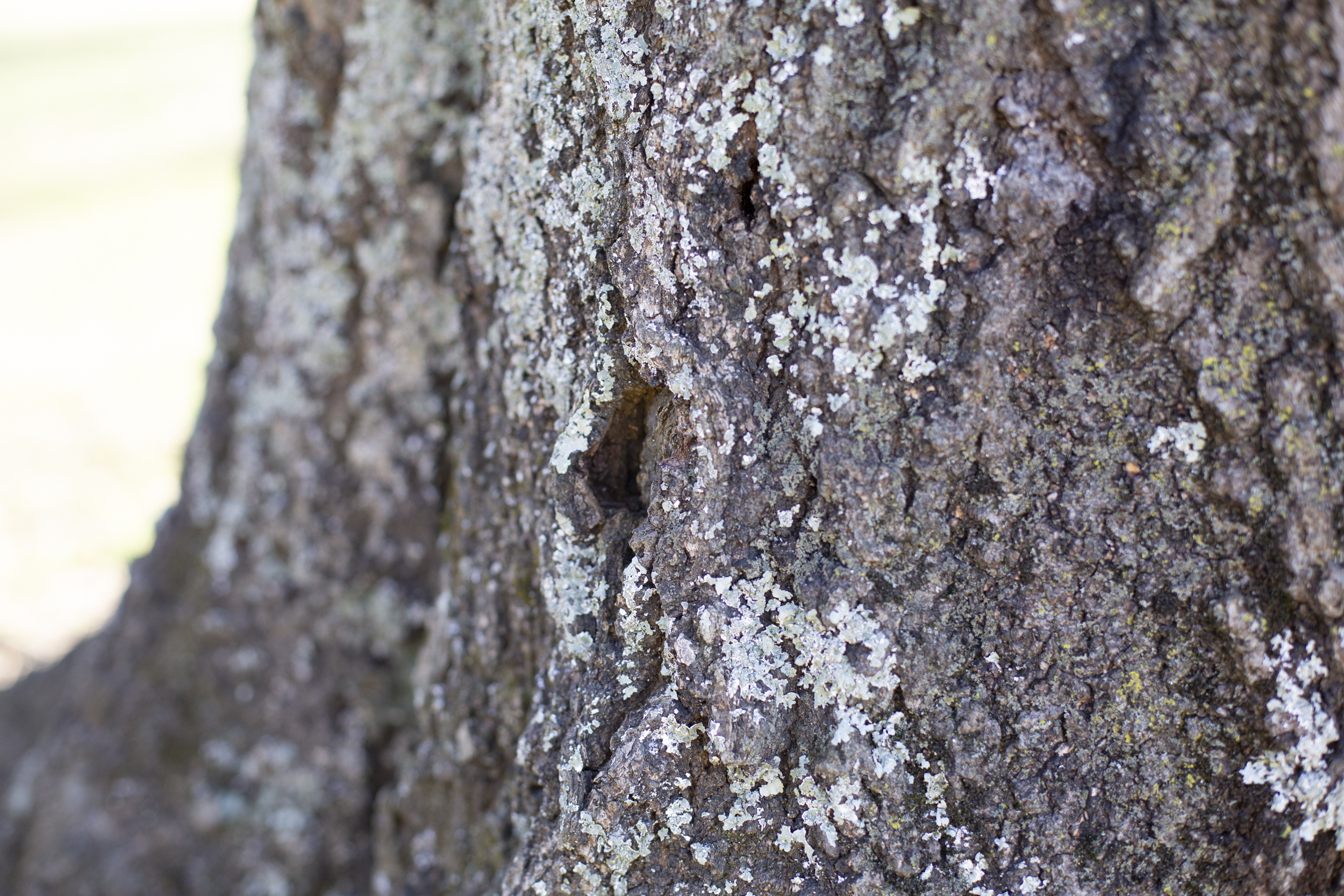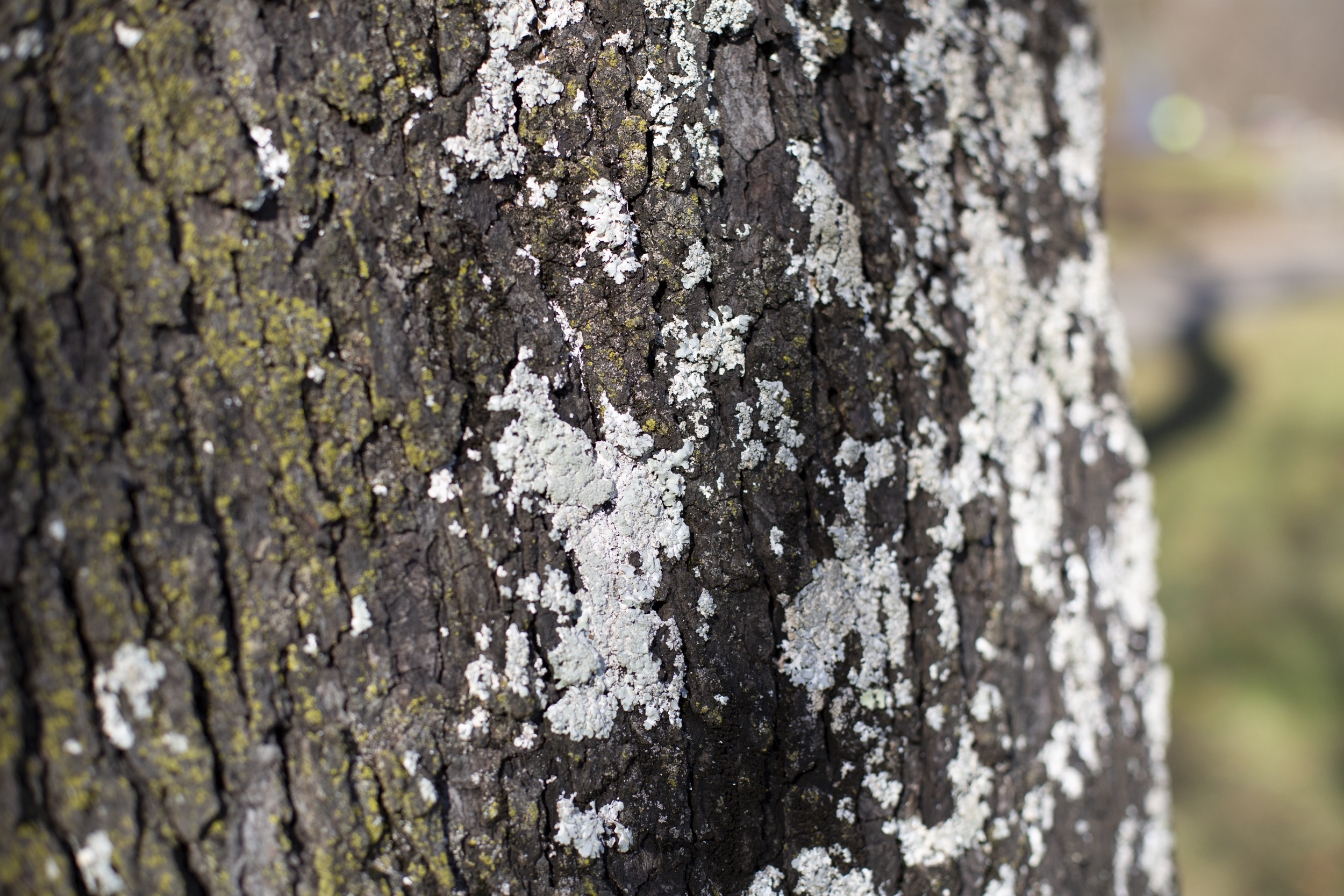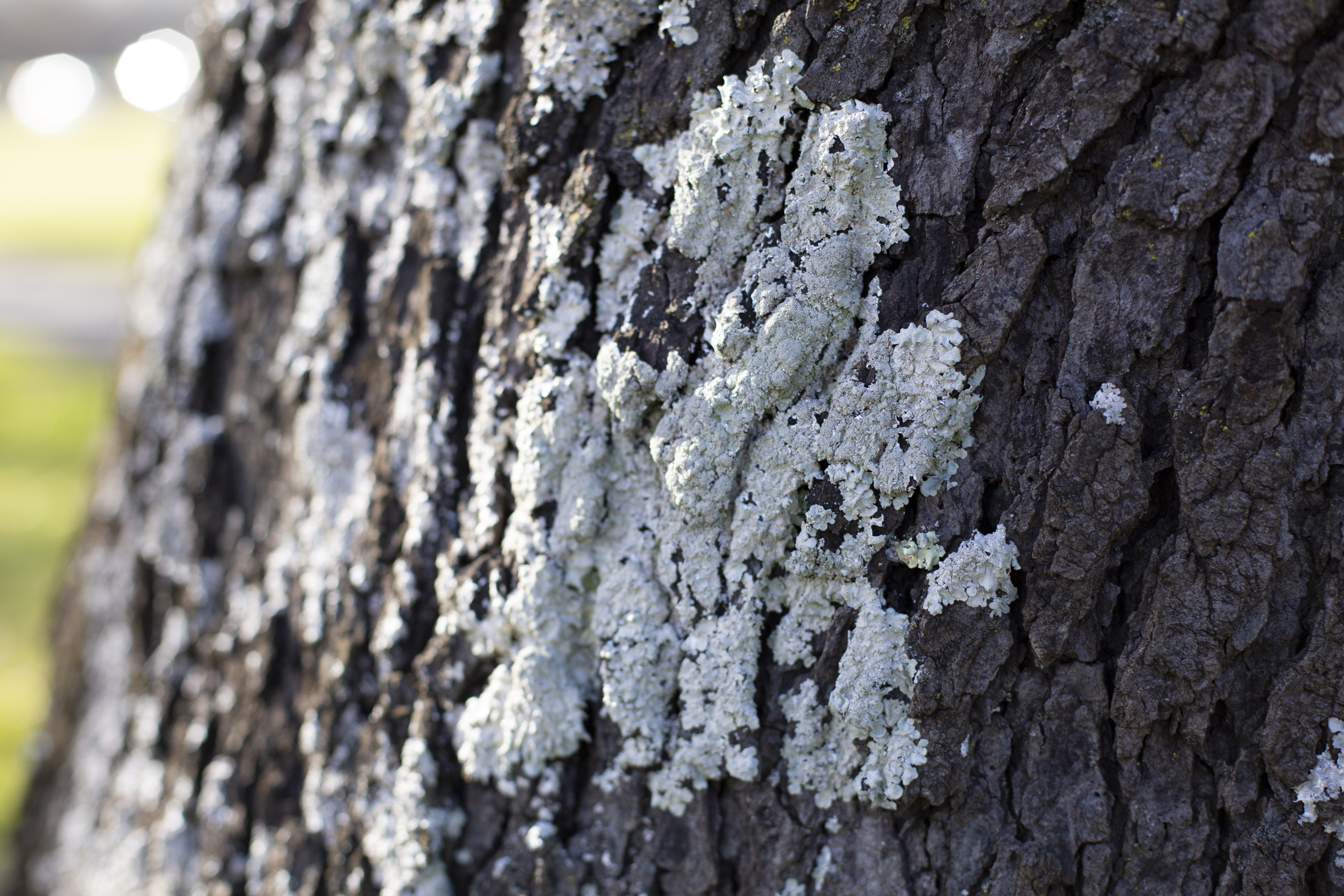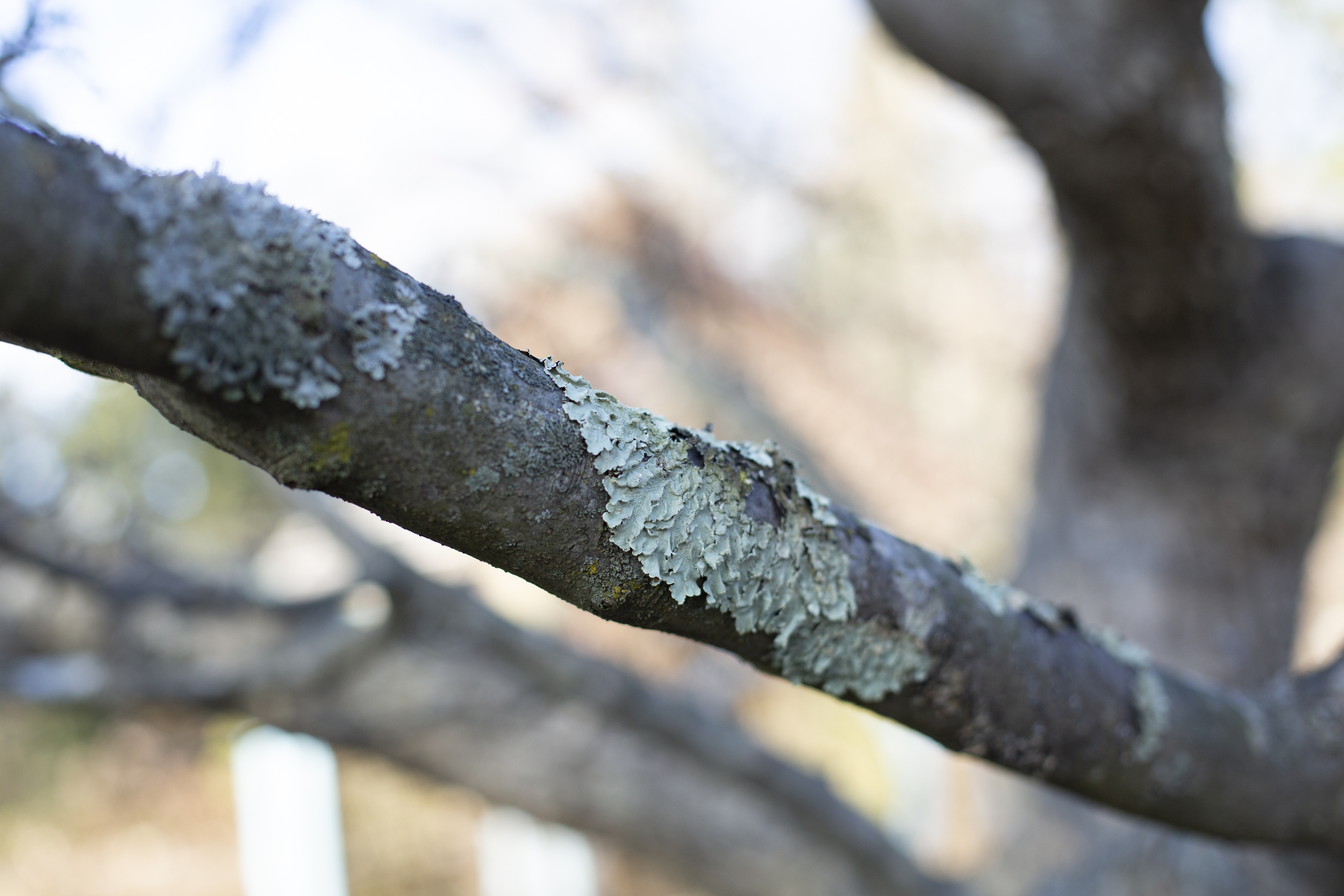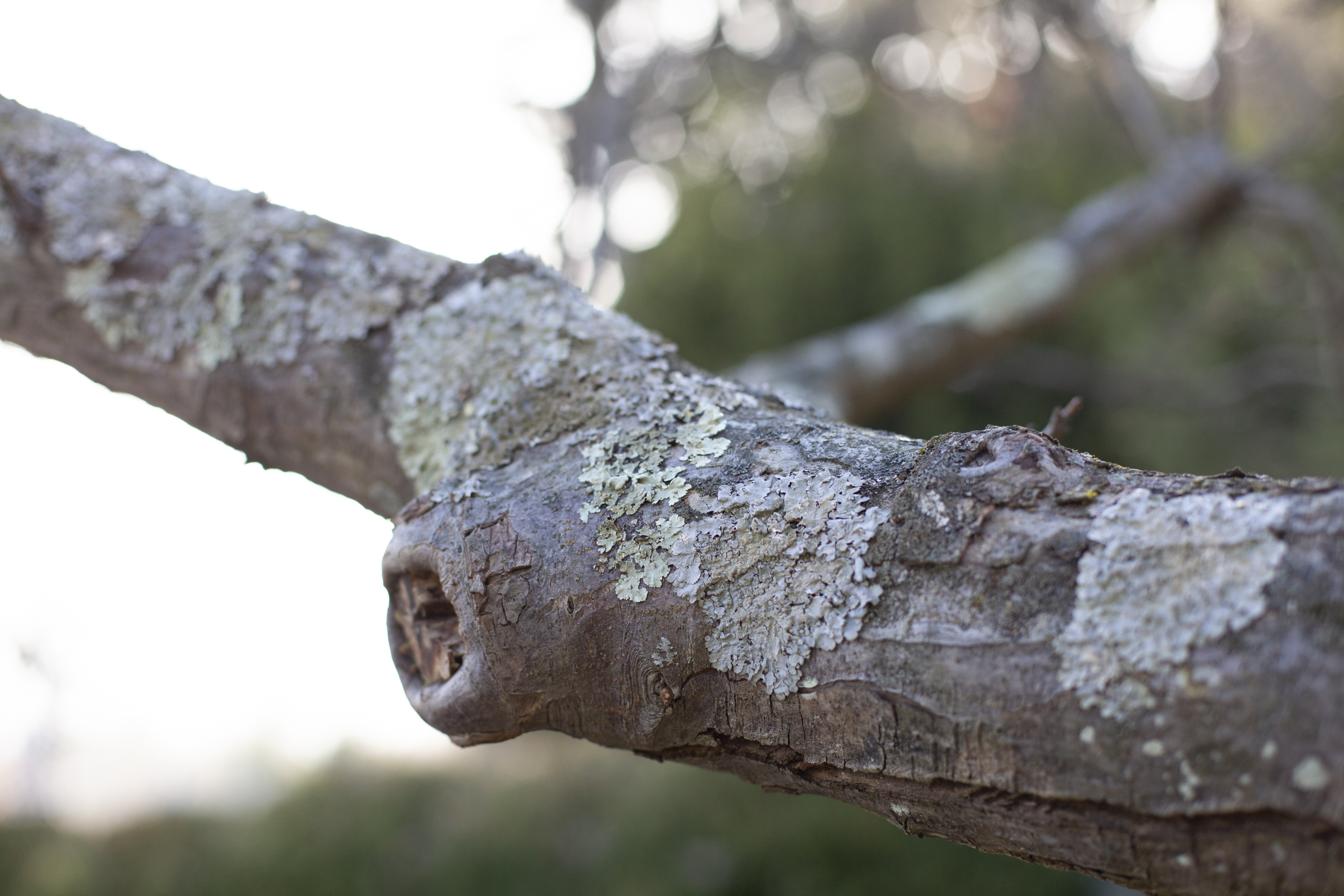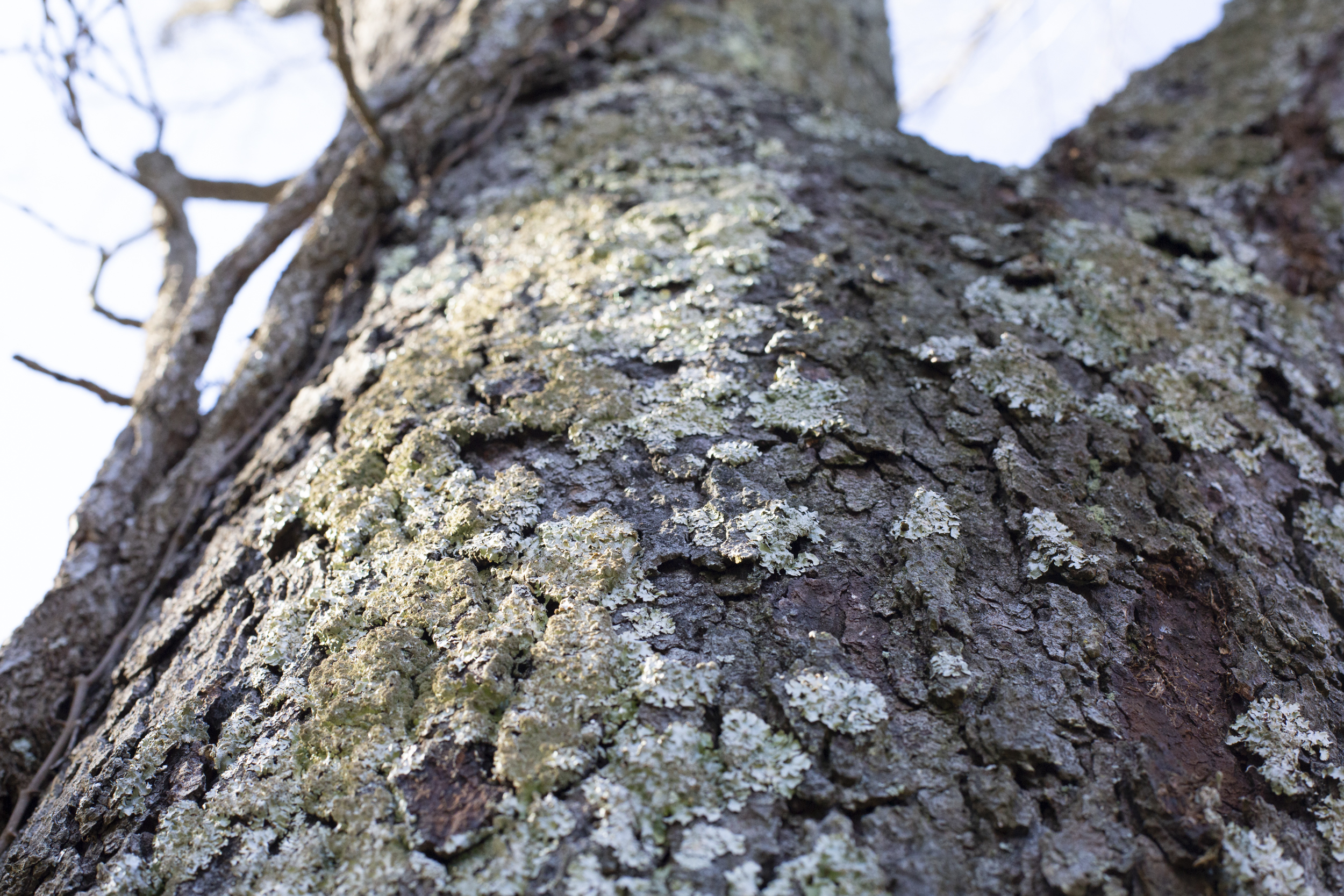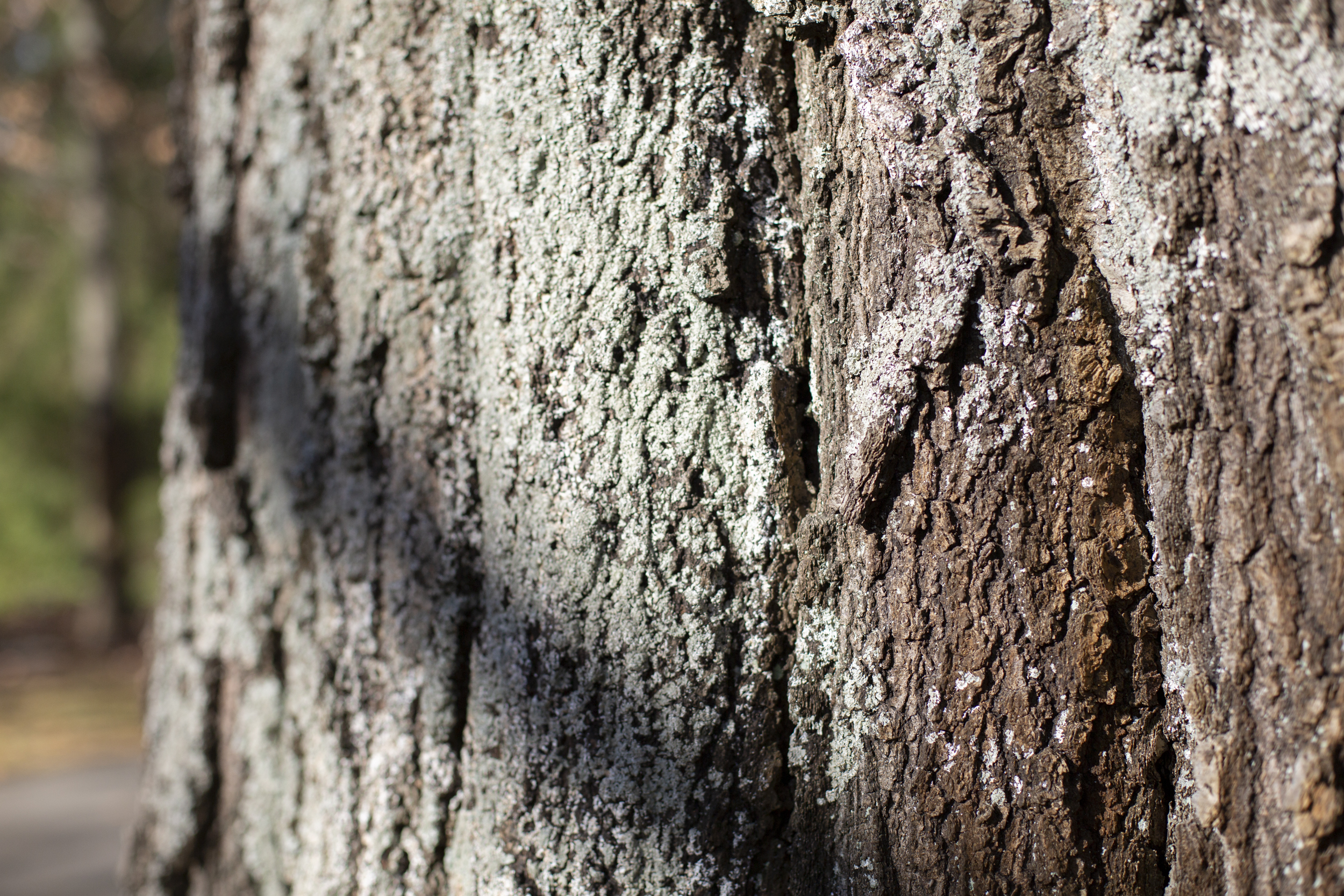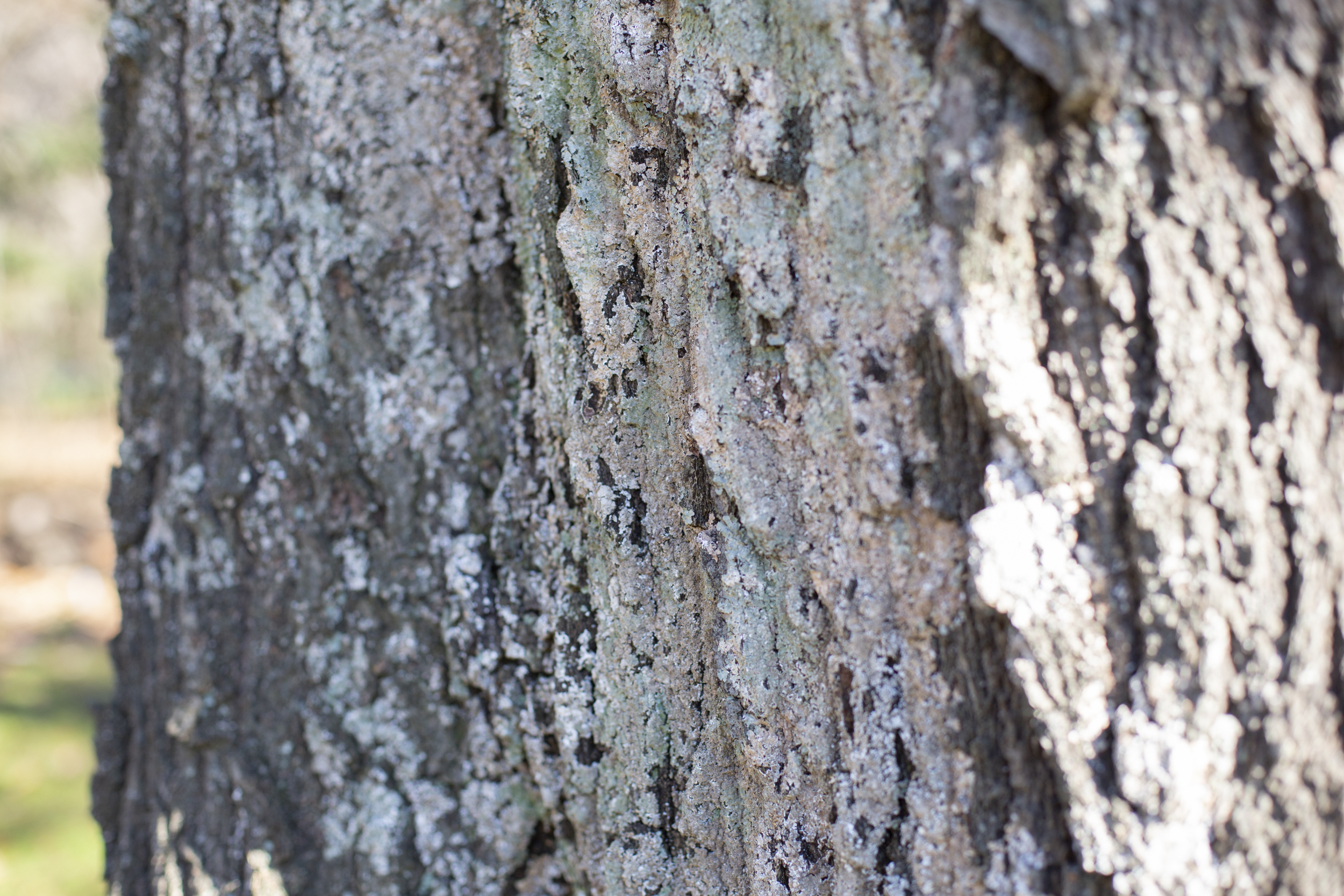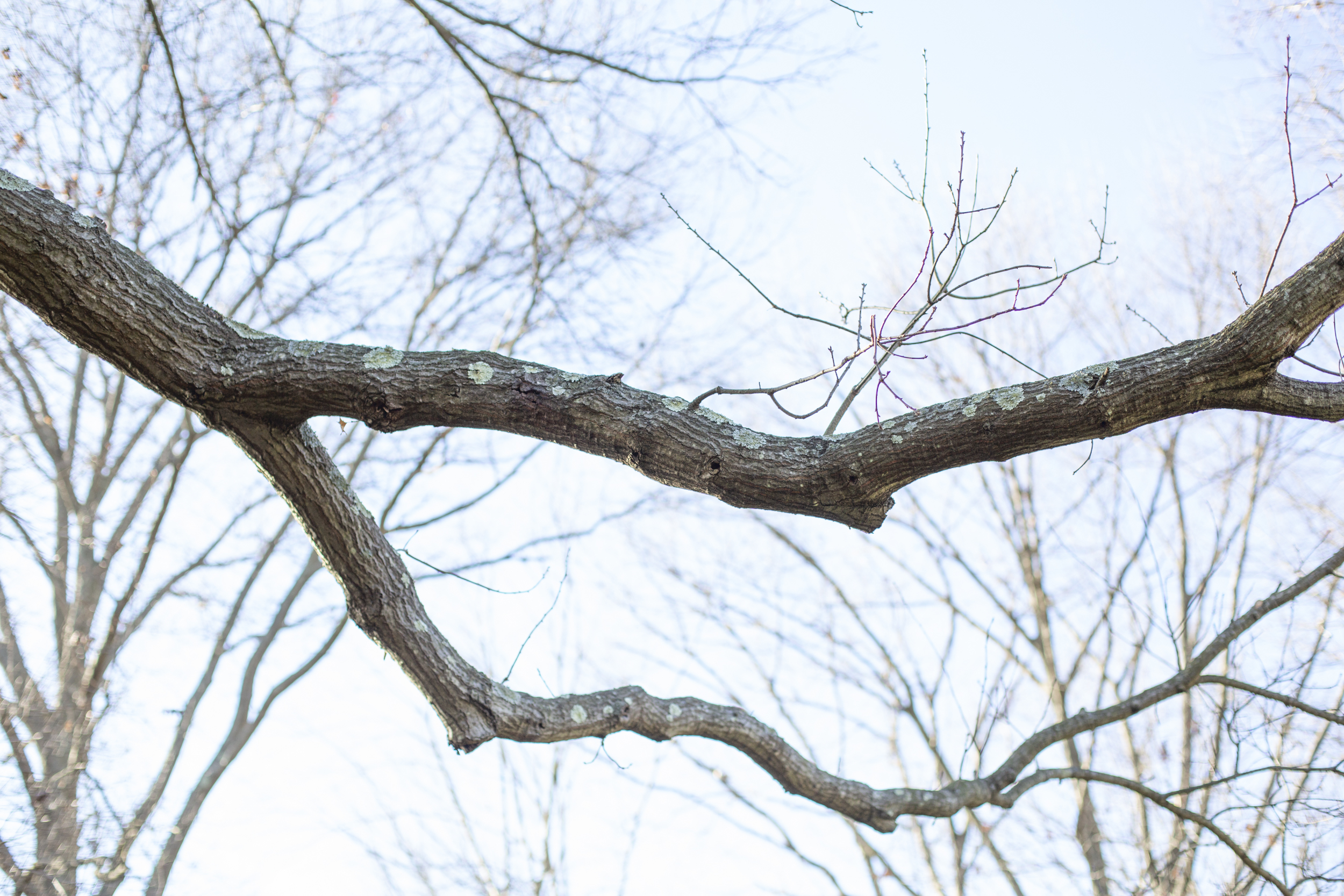That “stuff” growing on bark
by ISA Certified Arborist® Chris Gill
As Central Ohio moves further into winter, and the majority of deciduous trees have dropped their leaves, bark becomes increasingly visible. Bark is an interesting and important characteristic for trees and tree identification. It doesn’t take long for a novice naturalist to distinguish certain tree species based almost entirely on the bark of a specimen (Beech, Hackberry, River Birch, etc.). Upon further inspection of a tree’s bark an observer might notice organisms growing on the trees bark. A large variety of fungi can be seen on the bark of deadwood in trees and is usually associated with poor health of that particular branch or the entire tree. However, fungi are not the only organisms to inhabit the bark of trees.
Lichen (pronounced “Like-N”) is frequently seen on trees in Central Ohio and is often mistaken as a sign of a tree’s poor health. Lichen is the result of at least two different organisms living in a symbiotic relationship on the exterior of a tree’s bark. This symbiotic relationship usually consists of a fungus and green alga and/or a cyanobacterium with the filaments of the fungus making up the majority of the lichen. Lichen do not have the typical plant parts (roots, stems, leaves, cuticle, etc..) but instead attach themselves to the outer layer of a trees bark with rhizines. The rhizines are tiny hair like structures that do not penetrate into the inner bark and are harmless to the tree. The Lichen is able to photosynthesize its own food and gather moisture from the air, fog, dew drip or rain. In the vast majority of cases the lichen and tree relationship is viewed as being one of “commensalism,” where the Lichen benefit from the tree with the tree neither benefiting nor being adversely impacted by the Lichen. Lichen benefit from attaching itself to the bark of trees due to the increased availability of sunlight and it is this need for sunlight that makes Lichen really thrive on dead trees (no leaves, more light). The casual observer might infer that the cause of death was due to the Lichen; however, it’s just lichen taking advantage of the sunlight provided by the dead tree.
Lichen are an interesting organism and can grow even in the most extreme conditions. Next time you find yourself looking at a tree, keep your eye out for lichen!
Chris Gill | Regional Manager, Russell Tree Experts
ISA Certified Arborist® OH-6416A // Tree Risk Assessment Qualified (TRAQ) // ODA COMM. PESTICIDE LIC. #104040 // Russell Tree Experts Arborist Since 2015


